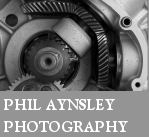


NLG were the initials of North London Garage, Corsica Street, St Pauls Road, Highbury, London. They produced motorcycles from 1908 to 1915.
1909 Cook had further racing successes, but failed to win any world records using an NLG fitted with a massive 20hp, 90-degree, 2,700cc V-twin JAP engine. The usual, more realistic models had a 3¾ hp Peugeot engine unless the purchaser requested something different.
1910 Sprung forks had become standard, with the rigid ones remaining as an option. Engines listed were: 3½ hp or 4½ hp JAP; 5hp and 7hp Peugeot V-twins; and an 8hp JAP V-twin.
1911 There was a 4hp racer and another fitted with an Anzani V-twin engine.
1912 Only JAP engines were used, usually a 4hp single or a 6hp twin.
By 1915, due to the war sales had diminished significantly, the range had been reduced to just the single, and then production ceased.
Stanley Show 1909

W. E. Cook and the 16-20 h.p. N.L.G.-J.A.P. on which he attempted records on the 11th inst. at
Brooklands. Some wild estimates have been made as to the speed Cook attained on this occasion, as it
so happened he was not officially timed owing to the failure of the electrical timing apparatus, the
worlds speed records still stand to the credit of the late Henri Cissac, whose fastest officially recorded speed on a 14 h.p. Peugeot was 87.32 m.p.h. This speed Cook is ambitious to excel.
More on the 90 MPH NLG
North London Garage, Corsica Street, N.
N.L.G. motor cycles have built up a name for themselves by their fine performances on the Brooklands track. On the other hand, these machines are not only built for racing purposes, but are constructed as excellent touring mounts to customers' desires. Three different types of machines are shown on the stand, all of them having torpedo tanks, handle-bar control, and footrests or footboards. Two models of single-cylinder machines are shown, but they are precisely the same in construction, the only difference being that one has a new Peugeot m.o.i.v. 84 x 86 engine fitted, and the other a 3½ h.p. side by side valve J.A.P. Spring forks are fitted to order, as well as carriers and other fittings; in fact, one of the specialities of the N.L.G. Co. is to build up racing or touring machines to motor cyclists' own specifications.
7 h.p. Twin Model: 80 x94 mm.; a.o.i.v.; Bosch b.b. magneto; Longuemare carburetter, h.b.c.; 3 to 1 gear; 2½in. ROM tyres; V-belt transmission.
This twin-cylinder machine is, of course, intended for fast touring work in hilly districts, or occasional use with a side-car attachment, for which purpose we should imagine from inspection, it would well fill the bill. Another machine shown on the stand is the 16-20 h.p. N.L.G.-Bat, on which W. E. Cook attempted world's record at Brooklands a week last Saturday. It was unfortunate for him that the electrical timing apparatus failed when he was doing his fastest speed. The machine is a huge projectile, and may be heard of yet in connection with record speeds.
The Motor Cycle, November 22nd 1909, Page 920.
Sources: Graces Guide, The Motor Cycle, et al
If you have further information or a query related to this page, please contact us